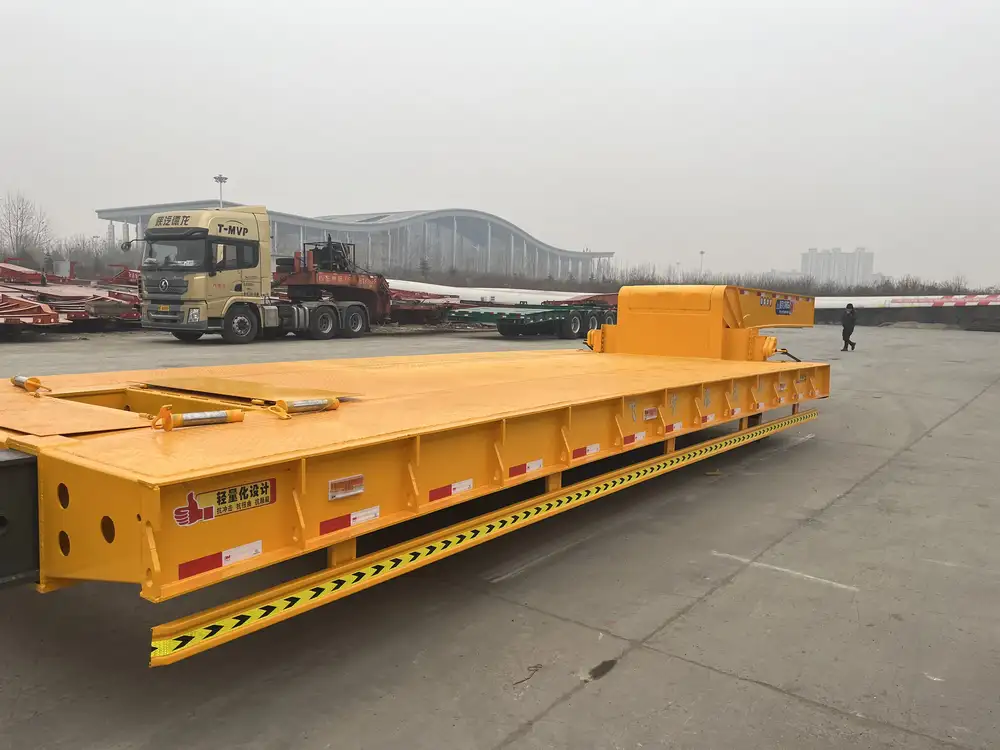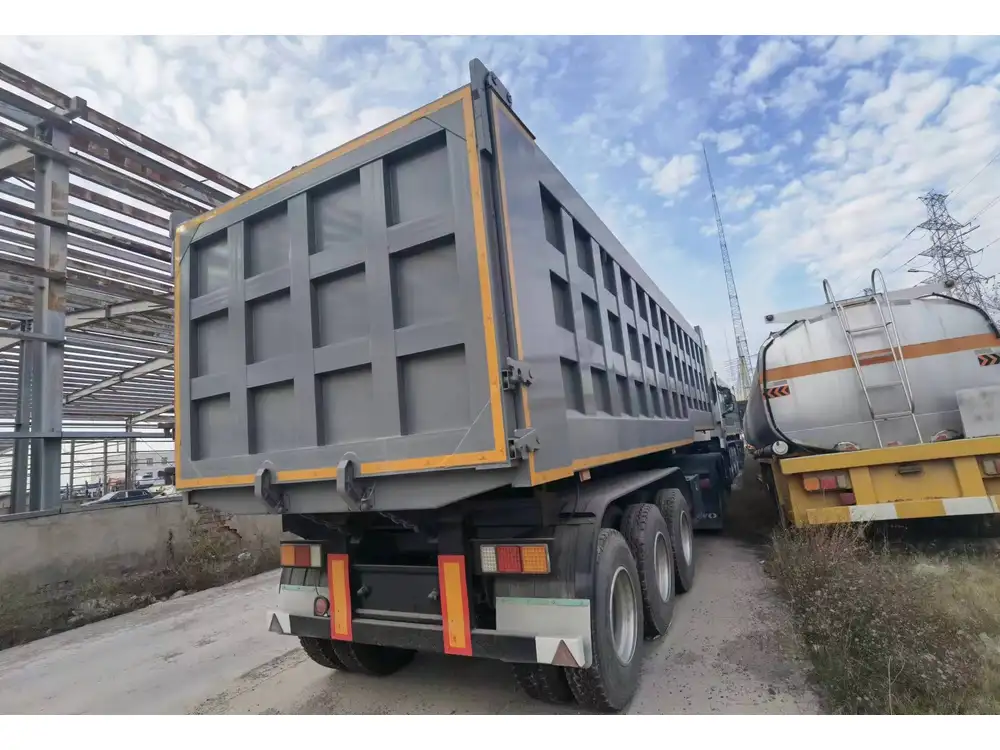Creating a flatbed trailer specifically tailored for a Utility Task Vehicle (UTV) can elevate your off-road experience significantly, allowing you to transport equipment, tools, and supplies with ease. In this article, we delve into the detailed process of constructing a flatbed trailer, emphasizing essential components, measurements, materials, and important safety considerations.
Understanding Your Needs: Factors to Consider
Before embarking on the construction of your flatbed trailer, it is crucial to identify your specific needs and intended use. This phase will help ensure that all aspects of the final product meet your requirements effectively. Here are crucial factors to consider:
| Factor | Description |
|---|---|
| Size | Determine the dimensions required for your UTV and what you plan to haul. |
| Weight Capacity | Calculate the anticipated weight load to ensure structural integrity. |
| Towing Vehicle | Consider the vehicle you will use for towing, including its maximum towing capacity. |
| Terrain | Assess the surface on which you will primarily operate the trailer; different terrains necessitate varying designs. |
| Materials | Choose materials based on strength, weight, and weather resistance. |
| Regulations | Familiarize yourself with local regulations regarding trailer construction and towing. |
Essential Tools and Materials

Tools Required
Engaging in trailer construction requires a set of tools that facilitate precision and efficiency. Below is a list of the essential tools you will need:
- Wrenches and Ratchets: A variety of sizes for securing bolts.
- Screwdrivers: Both flathead and Phillips for multiple fastening needs.
- Drill and Bits: To create holes for bolts and screws.
- Saw (Plasma or Band): For cutting steel and wood components.
- Welding Equipment: A welder, protective gear, and appropriate materials for fusing metal.
- Measuring Tape and Square: For precise measurements and ensuring corners are square.
Material List
The selection of materials is foundational to the trailer’s lifespan. Below is a curated list of materials commonly utilized in the construction of a flatbed trailer:
- Frame Material: Steel tubing (preferably 2×2 or 2×3 inches).
- Flatbed Surface: Plywood, aluminum sheet, or steel plates, depending on your budget and needs.
- Axle: Choose an axle rated for your trailer’s weight capacity; a straight or torsion axle may suit your requirements.
- Wheels and Tires: Select tires appropriate for weight and terrain (consider pressure ratings and tread type).
- Coupler: Ensure compatibility with your towing vehicle (2-inch or 2 5/16 inch ball couplers are common).
- Lighting: LED brake lights and license plate mounts to adhere to safety regulations.
Step-by-Step Guide to Building Your UTV Flatbed Trailer

Step 1: Designing Your Trailer
- Sketch a Blueprint: Create a blueprint that includes dimensions, component placements, and overall aesthetic for your trailer. Utilize graph paper for scaled down designs.
- Calculate Weight Distribution: The weight distribution of your trailer significantly affects towing behavior. Aim for a 60:40 or 70:30 ratio between the front and back.
Step 2: Constructing the Frame
- Cut Steel Tubing: Measure and cut the steel tubing according to your design specifications for the trailer’s perimeter and cross members.
- Welding the Frame: Assemble the steel components on a level surface. Weld the corners at 90-degree angles, reinforcing joints to increase stability.
- Add Cross Members: Install cross members at appropriate intervals to provide support beneath the flatbed surface.
Step 3: Installing the Axle
- Select and Position Axle: Choose an appropriate axle based on your previously calculated weight. Position the axle in the center of the trailer frame to maintain balance.
- Weld the Axle Brackets: Secure the axle to the trailer frame using brackets, ensuring that it is properly aligned and anchored.

Step 4: Flatbed Surface Installation
- Selecting Material: Choose a material that suits your hauling needs. For heavy-duty requirements, steel may be ideal; for lighter loads, weather-resistant plywood could suffice.
- Cutting Flatbed Panels: Cut the flatbed panels according to the dimensions of your frame.
- Securing the Surface: Lay the panels over the frame and secure them using screws or bolts. Ensure even spacing and alignment.
Step 5: Completing Essential Features
- Install Lighting: Based on local regulations, install brake lights and reflectors at the rear and sides of the trailer.
- Hitch Installation: Affix your coupler to the front of the trailer. Ensure that it is secured to withstand towing.
Step 6: Final Inspection and Testing
- Examine All Connections: Check all welds, bolts, and components for integrity and safety.
- Weight Test: Once complete, perform a weight test to ensure your trailer can bear loads comfortably.
- Trial Run: Conduct a test drive with the trailer to evaluate towing capability, hitch stability, and overall functionality.

Safety Regulations and Best Practices
Understanding Legal Requirements
Before taking your trailer on the road, familiarize yourself with essential safety regulations:
- Licensing and Registration: Depending on your region, you may need to register your trailer with local authorities.
- Lighting Requirements: Ensure your trailer is equipped with necessary reflectors and lights as per legal guidelines.
- Load Safety: Adhere to best practices when loading to prevent overloading and secure items to avoid movement during transit.
Preventative Maintenance Tips
- Regularly inspect the frame, tires, and brakes for signs of wear and tear.
- Clean debris off the flatbed and wheel wells to prevent rust and damage.
- Check wheel lug nuts and coupler for tightness before journeys.

Conclusion
Building a flatbed trailer for a UTV requires thoughtful planning, robust materials, and a precise execution strategy. By carefully considering your needs, following the structured construction process, and adhering to safety regulations, you will create a durable and functional trailer ready for your adventurous exploits. You can also customize your trailer design over time, adding features such as storage compartments or customizable tie-down points.
With your new trailer, transporting equipment and enjoying off-road adventures becomes more accessible and efficient, ensuring your UTV is ready for any challenge. Whether you’re hauling tools to a job site or embarking on weekend adventures, a custom-built flatbed trailer will meet your specific needs.



